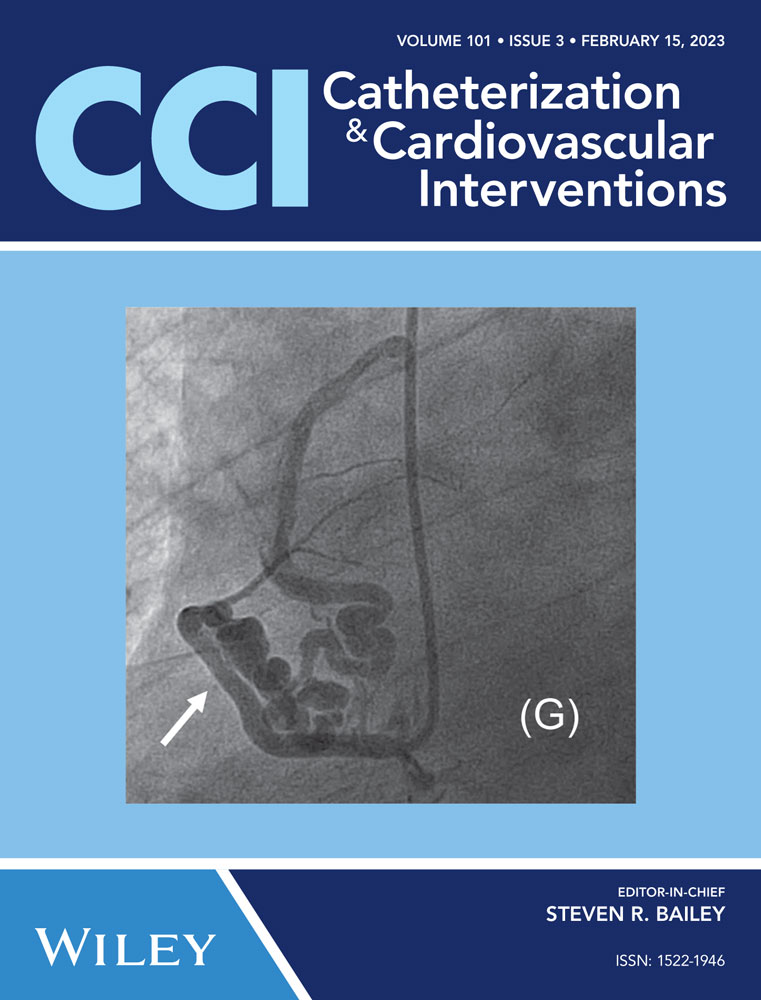Cusp-overlap versus coplanar view in transcatheter aortic valve implantation with self-expandable valves: A meta-analysis of comparative studies
Michel Pompeu Sá and Jef Van den Eynde shared the first authorship.
Abstract
Background
Permanent pacemaker implantation (PPI) is a common complication after transcatheter aortic valve implantation (TAVI). The cusp-overlap view (COV) was adopted to reduce PPI risk after TAVI with self-expandable valves (SEVs); however, the evidence remains scarce. We performed a systematic review with meta-analysis comparing COV and the standard coplanar view (CPV) technique to evaluate their effectiveness and safety.
Methods
Following the PRISMA statement, data were extracted from studies published by August 2022 and found in PubMed/MEDLINE, EMBASE, CENTRAL/CCTR, ClinicalTrials.gov, SciELO, LILACS, and Google Scholar. The primary outcome of interest was post-procedural PPI and the secondary outcomes were new left bundle branch block (LBBB), moderate/severe paravalvular leak (PVL), valve dislocation (pop-out); need of second transcatheter heart valve, 30-day mortality, stroke, conversion to surgery, coronary obstruction, implantation depth (mm), and post-TAVI mean gradients (mmHg).
Results
Eleven studies met our eligibility criteria and included 1464 patients in the COV group and 1743 patients in the CPV group. Patients who underwent TAVI with COV had lower risk of PPI (odds ratio 0.48; 95% confidence interval [CI] 0.33–0.70; p = 0.001) and higher implantation depths with COV (mean difference −0.83; 95% CI −1.2 to −0.45; p < 0.001). We did not observe any statistically significant differences in the rates of new LBBB, moderate/severe PVL, valve dislocation, need of second transcatheter heart valve, 30-day mortality, stroke, conversion to surgery, coronary obstruction, and post-TAVI mean gradients (mmHg).
Conclusion
In TAVI with SEVs, the application of COV is associated with lower risk of PPI compared with the standard CPV without increasing risk for adverse outcomes.
CONFLICT OF INTEREST
Dr. Basel Ramlawi has received financial support from Medtronic, Corcym, and AtriCure.
Open Research
DATA AVAILABILITY STATEMENT
The data that support the findings of this study are available upon request from the corresponding author.




